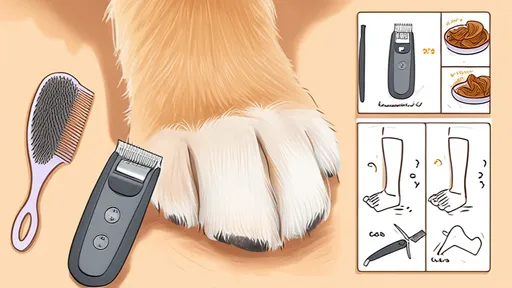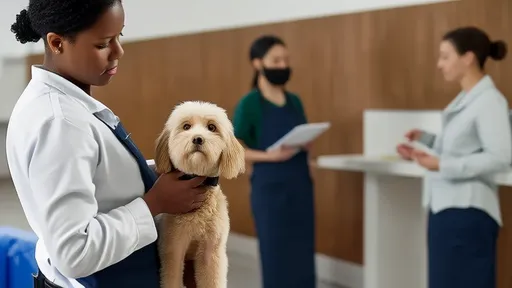Moving homes is often ranked among life's most stressful events, and when you add a beloved pet into the mix, the complexity multiplies. Our furry, feathered, or scaled family members don't understand the concept of moving day; they only sense the disruption of their familiar world. The packing boxes, the strange men carrying furniture, the general chaos—it's all a recipe for anxiety for an animal. For us, the move is a new chapter, but for them, it can feel like their entire book is being rewritten without their consent. The key to a successful, low-stress move with a pet lies not in a single action, but in a holistic approach that prioritizes their emotional and physical well-being throughout the entire process, from the first packed box to the final unpacking in your new abode.
The foundation of a smooth transition is laid weeks, if not months, before the moving truck arrives. Your goal during this pre-move phase is to maintain as much normalcy as possible while gradually acclimating your pet to the idea that change is coming. This doesn't mean having a heart-to-heart chat with your dog; instead, it's about subtle conditioning. Start by introducing the moving supplies slowly. Leave a few empty boxes and some packing paper around the house for a few days, allowing your pet to sniff and investigate these new objects. This demystifies them and prevents the sudden appearance of a mountain of cardboard from becoming a terrifying event. If your pet is particularly nervous, you can even place treats or their favorite toys in or around the boxes to create a positive association.
For cats, who are profoundly territorial, this process is even more critical. Their scent is their map and their security blanket. Rubbing a soft cloth around their facial glands (their cheeks and chin) and then wiping that cloth on the corners of rooms and furniture at their height helps mark the new, strange objects as familiar. As you begin packing, do it gradually. Packing a single room in one frantic afternoon will send their anxiety through the roof. Instead, pack non-essential items over several weeks, always making sure to leave their favorite beds, blankets, and toys out until the very last moment. The familiar scent on these items is a powerful calming agent.
Another crucial pre-move step is to update your pet's identification. This is a non-negotiable safety measure. Ensure their microchip registration details are updated with your new address and current phone number. If your pet isn't microchipped, now is the perfect time to have it done. A collar with a sturdy, legible tag is also essential, serving as a first line of defense should they manage to bolt out a door amidst the chaos. The tag should have your cell phone number, and it's wise to add a temporary tag with the new address as well. It's also the ideal time to schedule a vet visit for a check-up, ensure vaccinations are up to date, and request a copy of their medical records. If your pet is especially anxious, discuss potential calming aids or mild sedatives with your veterinarian for use on moving day itself.
Moving day itself is the crucible. The sheer volume of activity, noise, and strangers in their space is the ultimate test of your preparation. The single most important rule for moving day is pet containment. The safest place for your pet is nowhere near the action. The constant opening and closing of doors present a perfect opportunity for a terrified animal to escape. Designate a quiet, secure room as the "pet safe room" for the day—a bathroom, spare bedroom, or laundry room works perfectly. Move their bed, toys, food, water, and litter box (for cats) into this room well before the movers arrive or the packing frenzy begins.
Place a clear sign on the door that says, "Do Not Enter - Pet Inside," in bold letters to alert movers and family members. This room should be the very last thing you pack up and the first thing you set up at the new house. For the journey between homes, whether it's a short drive or a cross-country flight, your pet should be in a secure, well-ventilated carrier. Acclimate them to the carrier weeks in advance by leaving it out with comfortable bedding and treats inside, making it a safe den rather than a scary prison. Never, under any circumstances, sedate your pet for travel without explicit instructions and dosage from your veterinarian, as it can be dangerous, especially for animals with certain health conditions.
The moment you arrive at your new home, your work begins anew. Before you even unload the first box, set up the pet safe room immediately. Replicate the setup from your old house: same bed, same blanket, same food and water bowls, same litter box. This creates an instant oasis of familiarity in a sea of unfamiliar smells and sights. Keep your pet confined to this room for the first few hours, or even the first day, while you move boxes and furniture. This allows them to decompress in a safe space while the chaotic moving-in process happens around them. It also prevents them from getting underfoot or accidentally darting out an open door while you're distracted.
When you finally introduce them to the rest of the house, do so slowly and on a leash for dogs, or in a controlled manner for cats. Let them explore one room at a time under your supervision. Watch their body language closely. If they seem overwhelmed, take them back to their safe room for a break. For cats, this controlled introduction might need to last several days. It's often recommended to keep them in their safe room for a few days to a week, only allowing them to explore further when they seem calm and confident. Use those scent-soaked cloths again, wiping their scent on furniture and doorframes to make the new territory smell like home.
The post-move period is about establishing a new routine, which is the cornerstone of security for animals. Feed them at the same times they were fed before. Try to maintain their old walk and play schedules as much as possible. This predictable pattern tells them that even though the surroundings have changed, their life with you remains constant and secure. Be patient. It can take days, weeks, or even months for a pet to fully adjust. They may exhibit behavioral changes like hiding, decreased appetite, excessive meowing or barking, or even accidents in the house. This is a normal response to stress. Respond with patience and reassurance, not punishment.
Finally, help them form new positive associations with their new environment. Extra playtime, new toys, special treats, and plenty of affection will go a long way. Explore the new neighborhood together on leisurely walks. For cats, create vertical spaces like cat trees near windows so they can survey their new kingdom safely. Remember, your calm demeanor is contagious. If you are stressed and anxious, your pet will be too. By planning ahead, prioritizing their safety, and providing endless patience and love, you can transform a potentially traumatic experience into a manageable transition, strengthening the bond you share as you both embark on this new adventure together.

By /Aug 20, 2025

By /Aug 20, 2025

By /Aug 20, 2025

By /Aug 20, 2025

By /Aug 20, 2025

By /Aug 20, 2025

By /Aug 20, 2025

By /Aug 20, 2025

By /Aug 20, 2025

By /Aug 20, 2025

By /Aug 20, 2025

By /Aug 20, 2025

By /Aug 20, 2025

By /Aug 20, 2025

By /Aug 20, 2025

By /Aug 20, 2025

By /Aug 20, 2025

By /Aug 20, 2025

By /Aug 20, 2025

By /Aug 20, 2025